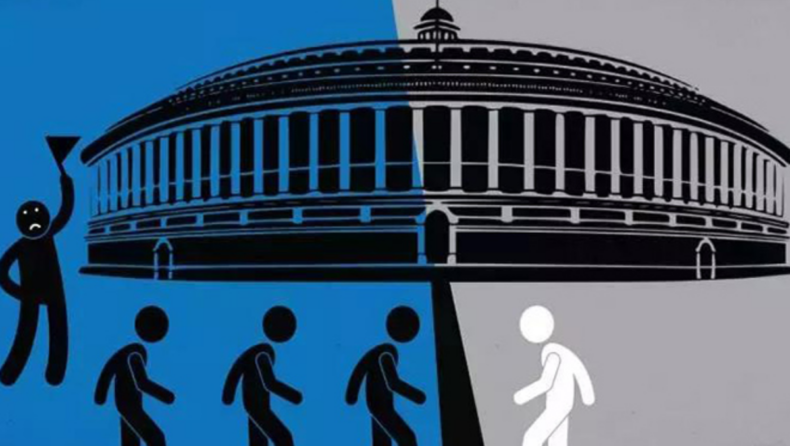Badly written, wrongly interpreted and obfuscatory at best, Para 4 of the 10th Schedule offers an opportunity to lawmakers to violate the very law it is a part of.
The anti-defection law was enacted by the Indian parliament in 1985. Its purpose was to eliminate political defection, which was affecting political parties.
Political parties are indispensable actors in our democracy, and instability in the party system has the potential to destabilize democracy.
Thus, the primary objective of the law on defection was to stabilize the party system by discouraging legislators’ frequent wanderings in search of greener pastures.
Initially, the law appeared to be effective.
However, inventive political minds quickly discovered ways to circumvent the prohibitions and expand the exceptions.
In accordance with a provision in the original law, if one-third of members of the legislature leave the original political party due to a split, they are not disqualified.
Therefore, members of the legislature began defecting in “one-third” blocs, ignoring the legal requirement that the original political party must split.
Considering the egregious manner in which this provision of the law was being abused, the legislature eliminated the split provision entirely. Consequently, those who defected in groups comprising one-third of the party were also disqualified.
The law provides an additional exemption known as “merger.”
Paragraph 4 of the 10th Schedule contains this exemption, which is widely abused at present.
According to Paragraph 4, if a member of the legislature claims that his original political party has merged with another party and that he and two-thirds of the total members have joined the new party, he and his fellow defectors are exempt from disqualification.
There are two requirements that must be met in order to qualify for this provision. His political party should merge with the other party.
Two-thirds of the legislators must support the merger.
If these two conditions are met, the defection will not result in disqualification. One thing to note in this context is that even if the original political party merges with another party, if two-thirds of the lawmakers oppose the merger, there is no merger under the law, and defecting members are disqualified.
Similarly, if only the lawmakers combine and their original political party does not join with the other party, there is no merger in law and the politicians do not receive disqualification protection.
In a recent defection case involving Goa assembly Congress members, the Goa bench of the Bombay high court ruled that if two-thirds of the lawmakers join with another party, this constitutes a legal merger, and the merger of the original political party is not a need.
In the current political drama in Maharashtra, the number 37, which represents two-thirds of the Shiv Sena’s assembly strength, is cited in political circles and the media as a foolproof technique to circumvent the law.
It implies that if the dissident faction gains 37 MLAs, it might join forces with the BJP and bring down the Uddhav Thackeray government.
In this instance, the dissident group does not appear to desire separation from the Shiva Sena; nevertheless, with 37 members, it may wish to act as a distinct organisation and support a BJP-led administration.
As the legislation now stands, no separate group may be created from a political party in order to form an alternative government with the aid of another party.
Any astute observer of this statute would view the whole Schedule to be a textbook example of poor drafting. Paragraph 4 is a noteworthy example.
The goal of the lawmakers was to provide an exception from disqualification in the event of a party merger, so that the legislators of the merging party would not be disqualified due to a decision made by their leadership to change the status of their party.
The following are the points meant to be made in this paragraph:
(1) The original political party is capable of merging with another;
(2) At least two-thirds of the legislative party’s members must consent to the merger.
(3) Only if they concur does the merger in law occur, and only then may lawmakers claim immunity from disqualification.
This paragraph can only be enabled if the preceding requirements are met. With this in mind, let’s examine Paragraph 4 closely. This paragraph’s main body is riddled with confusion.
The argument I wish to make, however, is that this paragraph does not need to exist in its current form. If a merger of political parties necessitates an exemption, it might be included in plain terms as an explanation in Paragraph 2.
In any event, the exceedingly obscure Paragraph 4 and the subhead beneath Paragraph 2 should be eliminated as soon as possible.












